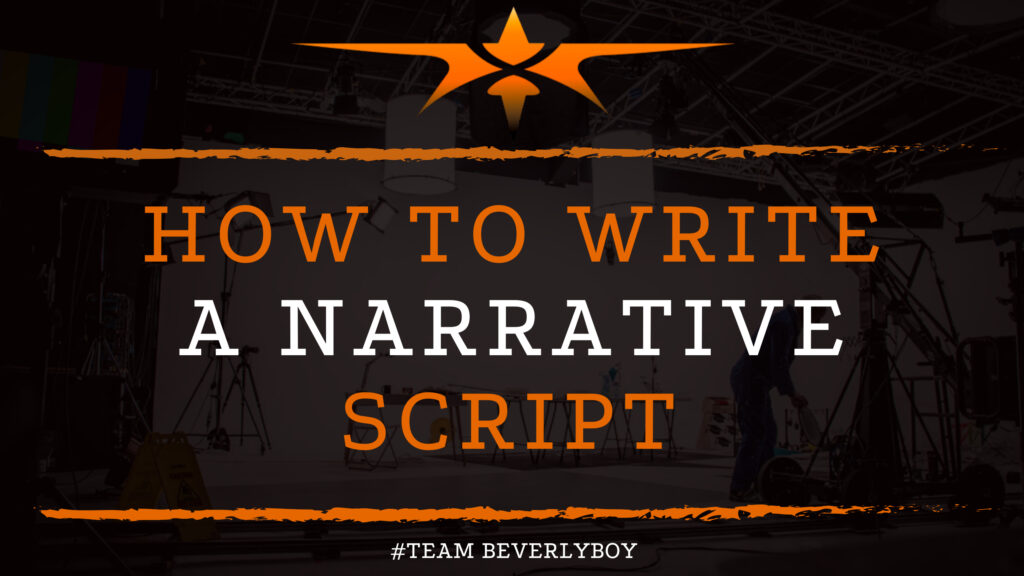How to Write a Narrative Script
The use of narrative in a script, either as an entire narrative script, or as a voice over for a particular portion of a film is a common technique for screenwriters to use. Most filmmakers know that the inclusion of narrative in a script is important to the experience of the audience, but how the narrative is incorporated into the script may vary. Learning how to write a narrative script is something that many aspiring screenwriters seek to accomplish early in their careers.

Writing a narrative script, or screenplay, requires simple understanding of the basic components of a screenplay which include:
- Scene Headings
- Characters
- Action
- Dialogue
- Descriptions
Do you know how to write a narrative script that incorporates all of the important details into the proper format? Let’s take a look!
What is a Narrative Script?
A narrative script or screenplay represents the description of narration which describes your story. Many screenwriters use narration to compliment their story and to drive the action, settings, characters and sounds.
A narrative script represents the foundation of your film’s message to the audience. Sometimes called a voice over, great narration adds depth and value to your production – as long as it’s used correctly.
Your narrative script will include the action, settings, characters and sounds that are taking place within your story. Writing your narrative script requires a lot of planning as it makes up the bulk of your film and can make or break your story.
How to Write a Narrative Script
Learning how to write a narrative script is all about the formatting. The first and most important opening elements to your action are your scene headings or sluglines.
The scene heading tells the reader where the scene takes place, what the setting is and the timing. For example, it will look something like:
[INT/EXT]. [LOCATION] - [DAY/NIGHT]
Additionally, if you’re incorporating various forms of narrative into your script, such as inner monologue or the use of dream sequences or flashbacks, your scene headings will include those details.
In cases where your narrative script is incorporating an inner monologue or flashback, the scene headings will look something like this:
[INT/EXT]. [LOCATION] - [DAY/NIGHT]
(FLASHBACK)
[INT/EXT]. [LOCATION] - [DAY/NIGHT]
CHARACTER NAME V.O.
Following the use of your scene headings or sluglines, you’ll use action lines to format the dictation of any actions that are to take place in your scene.
Keep action lines for your narrative script to three lines or less. If you find your action line taking up more than three lines, consider breaking the action down into multiple action sequences of three lines or less.
When incorporating narrative into your script, such as voice overs or off screen narrative, you’ll need to include those details in your script. Extensions of voice over or off screen communications are announced next to a character’s name in parenthesis.
This tells the audience how the dialogue is to be heard by the audience. For example, if you’re including a voice over or off screen dialogue in your narrative script, you’ll format it as follows:
[INT/EXT]. [LOCATION] - [DAY/NIGHT]
CHARACTER NAME V.O.
[INT/EXT]. [LOCATION] - [DAY/NIGHT]
CHARACTER NAME O.S.
Narration
Many times the narrative is delivered by a narrator. Thus, as you learn how to write a narrative script, you’ll want to focus a lot of your effort on how you dictate who is speaking, how the speaking is heard by the audience, and where the speaking takes place.
Following all of the above formatting rules will help you to announce your narrative appropriately while building out complex and detailed scripts.

